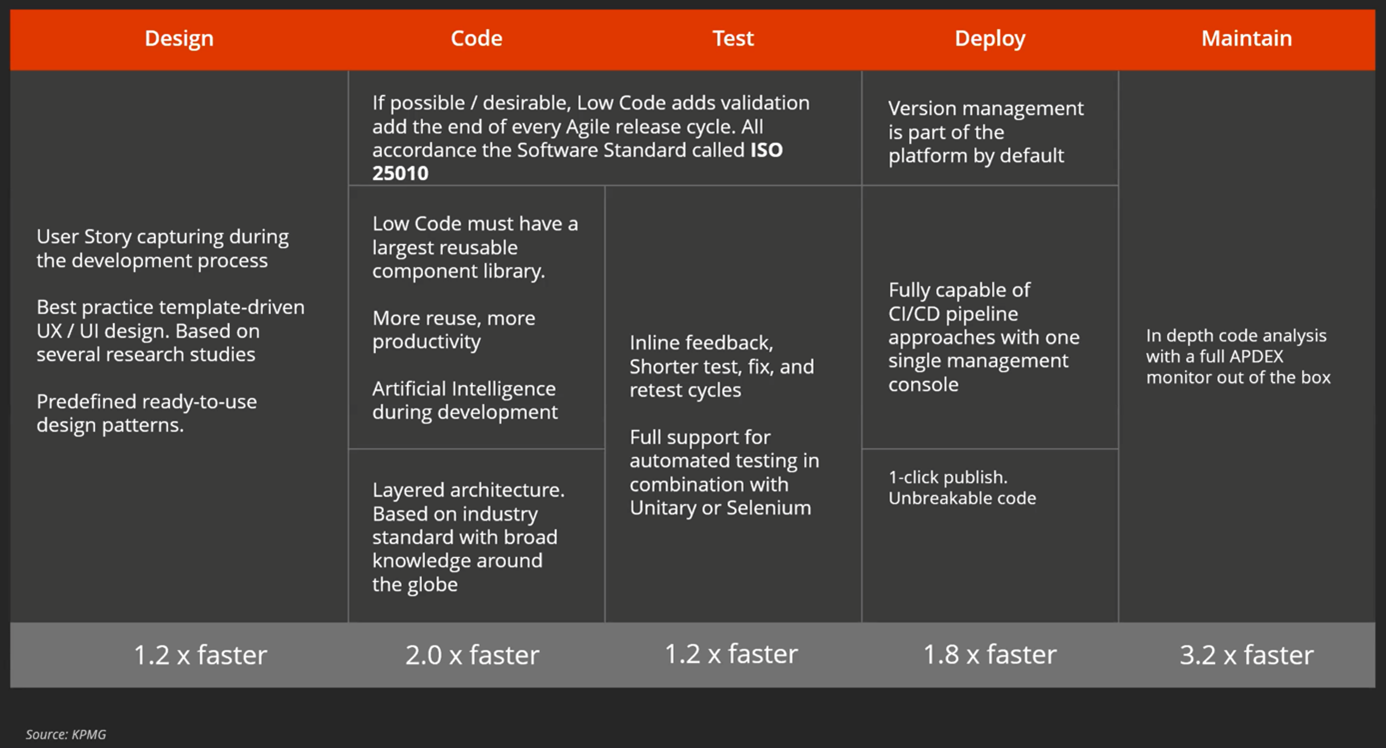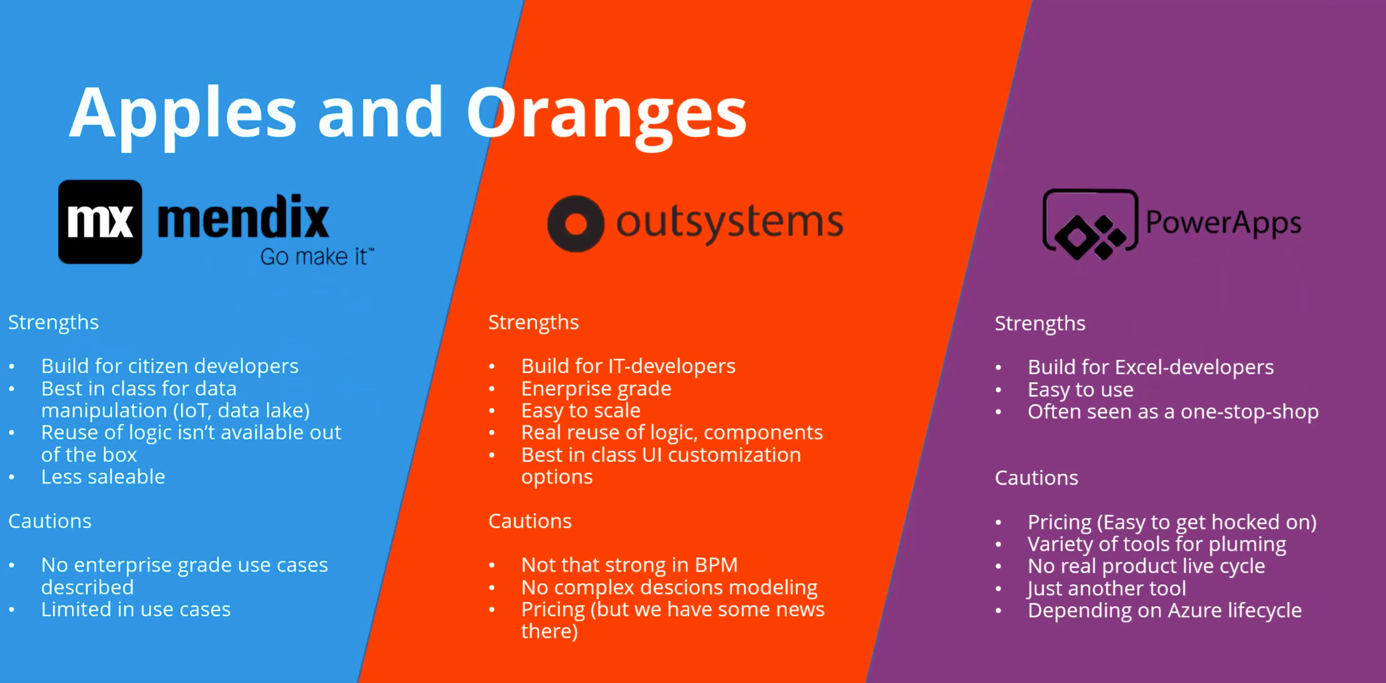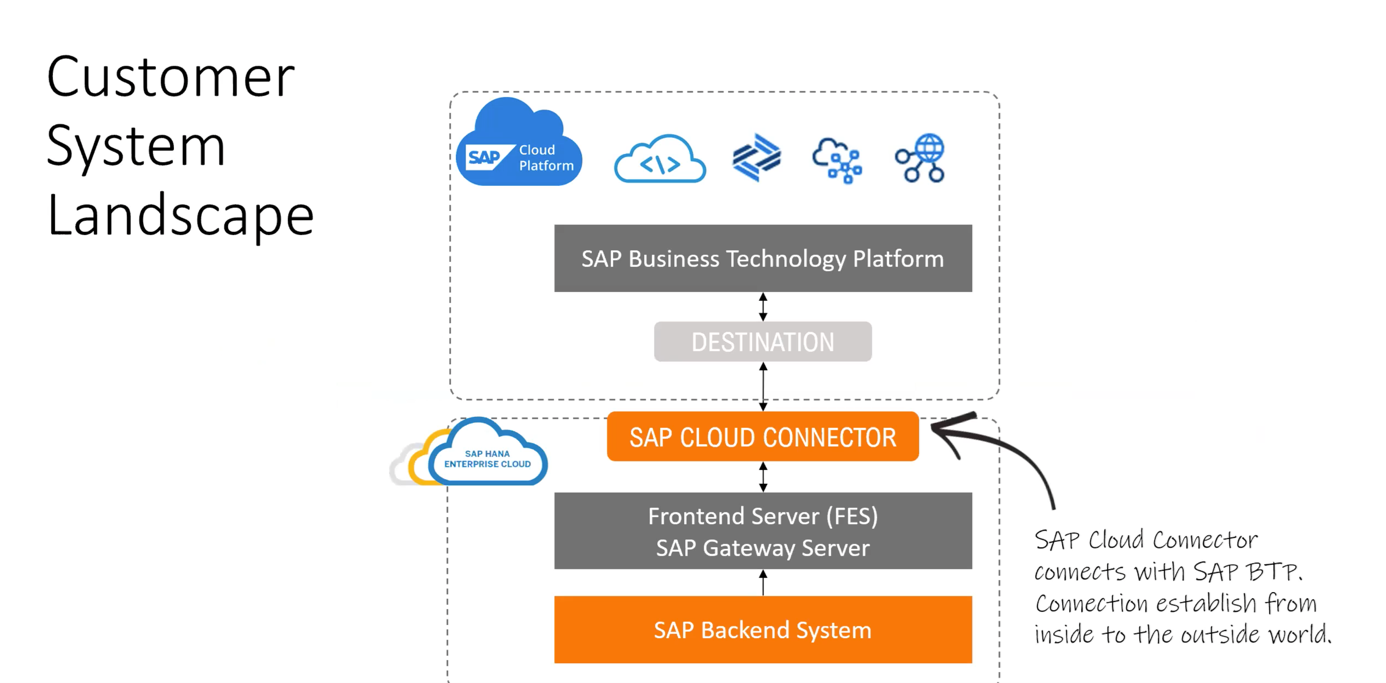Low-code development seems to be the holy grail of software development. It’s fast and efficient, and anyone can do it. But is that really true? What exactly are the differences between low-code and traditional development? In this webinar, Edward van der Kust, enterprise architect and Director of Creetion Application Services, takes us into the wonderful world of low-code development.
Edward van der Kust specialises in OutSystems and SAP. OutSystems is one of the larger players in the low-code development market, and it provides a platform that allows users to develop applications with standard building blocks. Van der Kust explains how that differs from an ordinary development environment. ‘Low-code is creating applications without simply typing lines of code,’ he says. ‘And today’s best-known low-code platforms go beyond development: they can also help you plan your application in advance and monitor it once it’s up and running.’
The result is that you can build an application six to eight times faster, says research firm Forrester, and application development is streamlined, allowing IT departments to catch up. The figures can vary a lot, says Van der Kust. ‘KPMG researched the Dutch market and concluded that the profit is somewhere in the range of 1.2 to 3.3 times faster, depending on the phase you are looking at. I think KPMG’s figures are closer to the experiences we’ve had in practice.’

The figures from the KPMG study, which are specific to the Netherlands, show that for the programming itself (under 'Code’), the speed is twice as fast. ‘That means that if we want to improve this more towards Forrester’s figures, there is still some work to be done.’
So who are the users of low-code platforms? The range of platforms can be divided into three types for different target groups: a no-code framework that anyone can use, a low-code framework for business users, and a high-end low-code framework for professional developers. Low-code appears to be enormously popular, especially among the first two groups. According to research firm Gartner, almost 60% of customised applications today come from outside the IT department. The vast majority of these are made with low-code solutions. The agency expects that by 2024, over 65% of all applications will be made using low-code platforms.
What does a low-code development process look like?
Like a traditional project, a low-code process has phases for Infrastructure (choice of platform for the end product), Project Initiation (business case, requirements, assembling the team), Development (actually building the applications) and Testing, Preproduction & Acceptance (testing, quality control, regression). That means low-code is only a small part of the entire process. ‘The gain in terms of the full process is therefore minimal,’ says Van der Kust.
This means there must be other reasons for using a low-code platform. The IT industry is one of the most labour-intensive in the world. Most of the work actually has to be done by hand. Low-code platforms mainly prove their worth in automating software delivery. A low-code platform is not software that builds applications on its own. Instead, it provides better tools the developer can use to automate many things during the development process. This should give them more control over the entire process.
‘That’s the best experience I had when I first started working with low-code,’ says Van der Kust. ‘All at once I got a whole toolset with which I could do everything; no need to worry about versions, scripts, how to get this or that component to work, or how to debug it. With a low-code platform, all that is covered in one environment.’
A comparison: Mendix, OutSystems and Power Apps
Van der Kust observes that three platforms are being used frequently in the Netherlands. Mendix is primarily intended for what we call ‘citizen developers’ or amateur programmers. OutSystems is aimed primarily at the traditional IT developer, and Power Apps, which is a Microsoft product, is aimed more at Excel developers.

How does low-code fit into an enterprise environment like SAP?
A low-code application uses the SAP Cloud Connector that resides between the SAP components in the S/4HANA database and the SAP Business Technology Platform. There, the low-code apps can provide all kinds of automation for handling business transactions between the various parts of the ERP system.
The Cloud Connector hooks into the SAP backend and automatically retrieves a list of all available data services in the platform. Then you can start building your application in a low-code environment with the data services you need. This works with any low-code platform and with more traditional programming environments.





